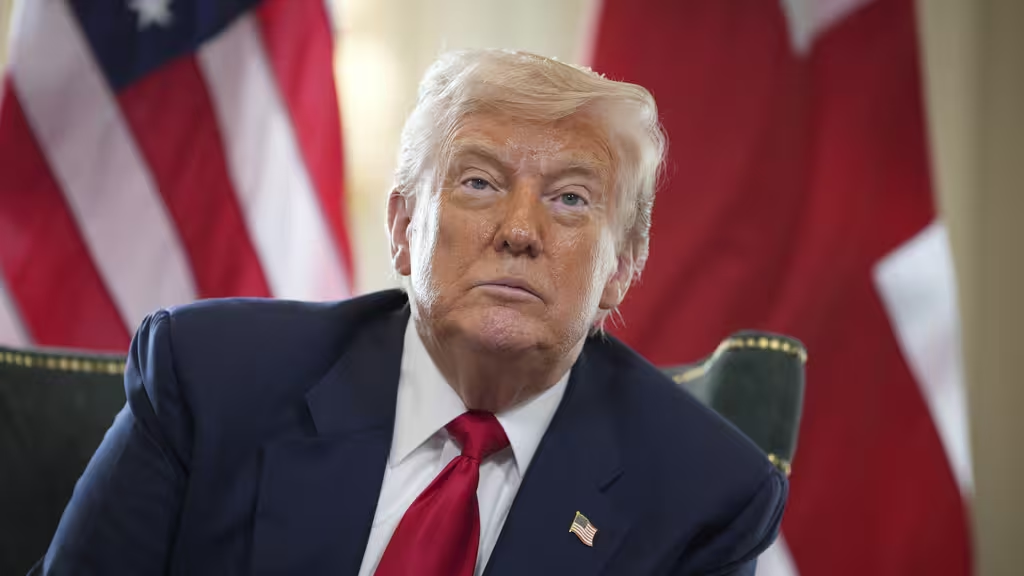This unexpected deployment comes amid already heightened tensions between Moscow and Washington, as analysts warn of a potential return to Cold War–style brinkmanship — only this time, the ocean’s depths are the new front line.
Trump’s Personal Hand in the Game?
Sources within the Pentagon have leaked unconfirmed reports that Trump personally approved the deployment of two Virginia-class attack submarines into international waters near critical Russian naval zones. Officially, the U.S. Navy claims they’re “on routine patrol.” Unofficially, these subs are testing Russia’s response capacity and resolve.
This aligns with Trump’s previous doctrine of “provocation through pressure.” The former president has long criticized the U.S.’s traditional strategic restraint, advocating instead for more visible displays of dominance. In this case, the objective would be to force Russia to reveal its detection capabilities, response strategy, and, perhaps most dangerously, its red lines.
Russia Reacts: High Alert in the Arctic
Moscow’s response was immediate and severe. The Kremlin condemned the operation as “a high-risk provocation,” and President Vladimir Putin called an emergency security meeting. Russia’s Northern Fleet has reportedly been placed on heightened alert, while Tu-142 maritime patrol aircraft were scrambled to track the American submarines’ acoustic signatures.
Unconfirmed sources suggest that a Borei-class nuclear missile submarine was also deployed from the Murmansk region, possibly armed and ready for a second-strike scenario. In addition, a live (but unarmed) missile launch drill from a Russian warship was observed in the Barents Sea — a not-so-subtle signal to Washington.
Crisis Scenarios on the Table
1. The Miscalculation Spiral
One of the gravest risks lies in misinterpretation. A submerged American sub might pass within a few hundred meters of a Russian vessel. A sudden noise, a sonar ping, or a decoy dropped could be misread as a hostile act. In Cold War terms, this is known as "tactical collision risk", and it nearly triggered nuclear alerts on multiple occasions. In 2025, with global trust at an all-time low, one wrong move could set off a fatal chain reaction.
2. Controlled Leak or Escalating Exposure
Another likely scenario is that the U.S. wants to be detected — to show that it can enter Russian-sensitive zones undetected, and then retreat. This humiliation could provoke Moscow into launching its own show-of-force, such as deploying hypersonic Zircon missiles, or violating NATO airspace as a diversion. Such gestures, even if symbolic, bring serious escalation risk.
3. Diplomatic Fallout or Real Incident
If one of the submarines is forced to surface or if there’s physical contact, diplomacy could implode. Moscow might pull out of arms control talks or withdraw from New START, the last remaining nuclear limitation treaty. A torpedo warning shot, sonar jamming, or even a scrape between hulls could trigger a diplomatic disaster, or worse — military retaliation.
The End of Strategic Restraint?
For decades, nuclear deterrence relied on ambiguity, predictability, and mutual understanding. Trump’s approach is different. Critics argue that he uses nuclear ambiguity as a weapon, not a shield. By pushing strategic boundaries, he’s turning deterrence into provocation.
“This isn’t deterrence. It’s nuclear poker,” said a military analyst from SIPRI (Stockholm International Peace Research Institute). “Every submarine is now a silent chess piece. But sometimes, the hand trembles.”
The risk is that without clear red lines, and in a world with fewer treaties and more AI-assisted decision-making, human error or overconfidence becomes lethal.
Arctic Waters: The New Silent Battlefield
The region where these events are unfolding isn’t random. The Kola Peninsula hosts Russia’s main Arctic naval base and a large portion of its second-strike nuclear arsenal. As melting ice opens Arctic shipping routes, the U.S. sees strategic value in asserting naval dominance there. Russia, in turn, views this as a direct encroachment on its defensive buffer zone.
Reports also suggest the U.S. may have deployed unmanned underwater drones (UUVs) to collect intel on Russian submarine movements — adding yet another unpredictable layer to the underwater chess match.
Official Silence, Unofficial Panic
Despite the severity of the situation, global governments remain publicly quiet. NATO has stated only that it is “monitoring the developments.” Germany and France have called for “restraint and transparency,” but stopped short of confirming any offensive American posture.
China, meanwhile, is watching silently — while ramping up its own naval exercises in the Pacific, possibly preparing for a similar underwater confrontation in the future.
From Cold War to Cold Abyss
The logic behind Trump’s move is clear: project strength, test boundaries, and expose Russian weaknesses. But this is a dangerous game in a nuclear age, where the silence of the sea masks deadly intent.
Two American submarines now sit near Russia’s most guarded underwater frontier. In the crushing black silence of the deep ocean, they wait. And the world holds its breath.

💬 Comments (2)
Bob
Bob
Leave a comment